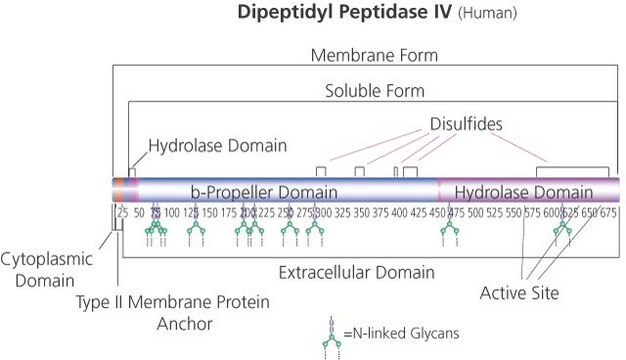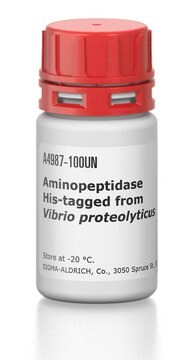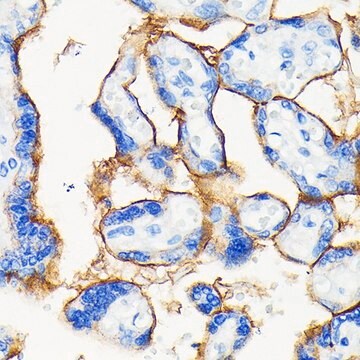D3321
Dipeptidyl Peptidase VII human
recombinant, expressed in Sf9 cells
Synonyme(s) :
DPP7, Quiescent cell proline dipeptidase
About This Item
Produits recommandés
Produit recombinant
expressed in Sf9 cells
Niveau de qualité
Forme
solution
Activité spécifique
≥1,500 units/μg protein
≥1500 units/μg protein
Poids mol.
89.1 kDa
Maladie(s) pertinente(s)
diabetes; cardiovascular diseases
Conditions d'expédition
dry ice
Température de stockage
−70°C
Application
Actions biochimiques/physiologiques
Propriétés physiques
Définition de l'unité
Forme physique
Mention d'avertissement
Danger
Mentions de danger
Classification des risques
Eye Dam. 1 - Repr. 1B - Skin Corr. 1C
Code de la classe de stockage
6.1C - Combustible acute toxic Cat.3 / toxic compounds or compounds which causing chronic effects
Classe de danger pour l'eau (WGK)
WGK 2
Certificats d'analyse (COA)
Recherchez un Certificats d'analyse (COA) en saisissant le numéro de lot du produit. Les numéros de lot figurent sur l'étiquette du produit après les mots "Lot" ou "Batch".
Déjà en possession de ce produit ?
Retrouvez la documentation relative aux produits que vous avez récemment achetés dans la Bibliothèque de documents.
Notre équipe de scientifiques dispose d'une expérience dans tous les secteurs de la recherche, notamment en sciences de la vie, science des matériaux, synthèse chimique, chromatographie, analyse et dans de nombreux autres domaines..
Contacter notre Service technique









